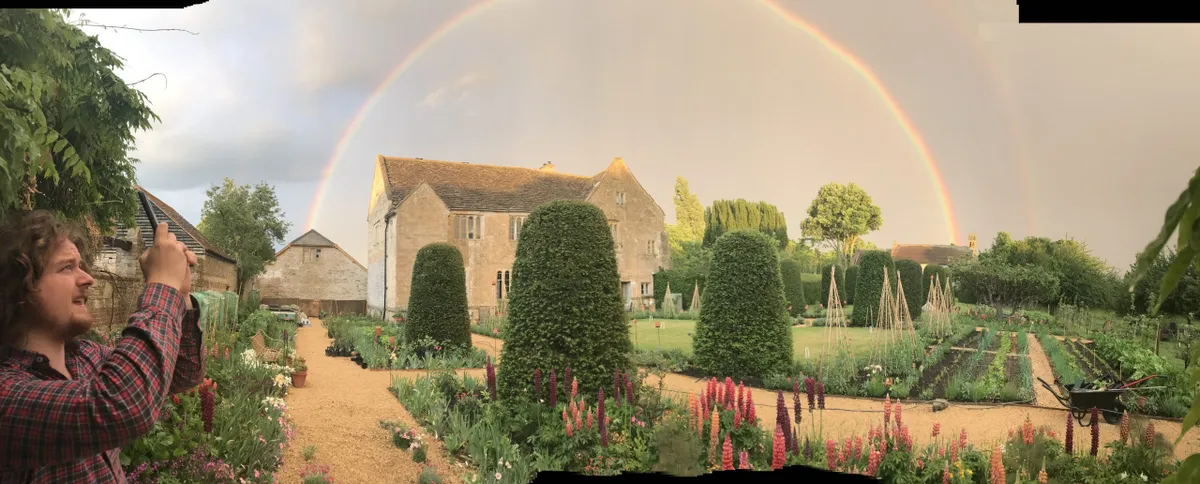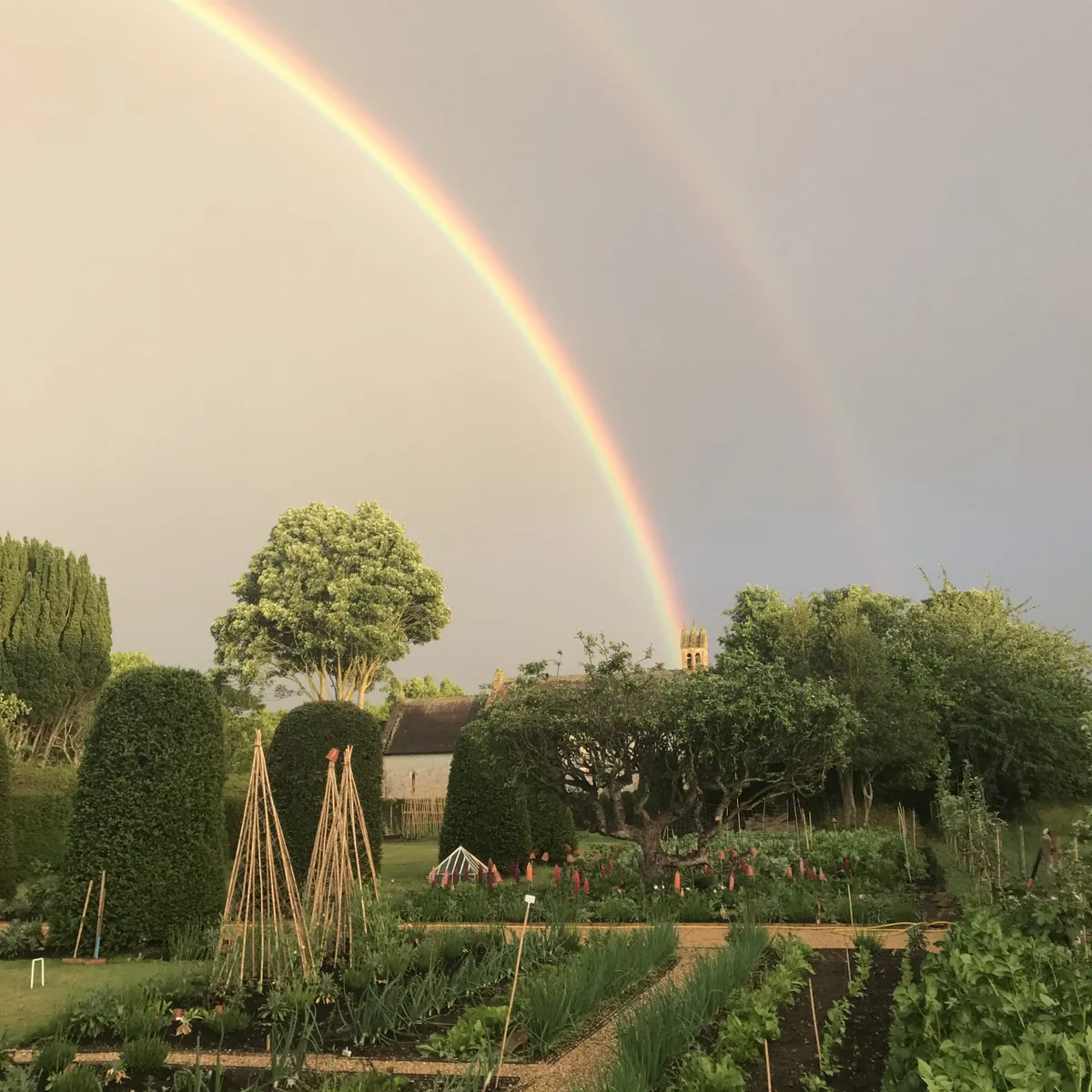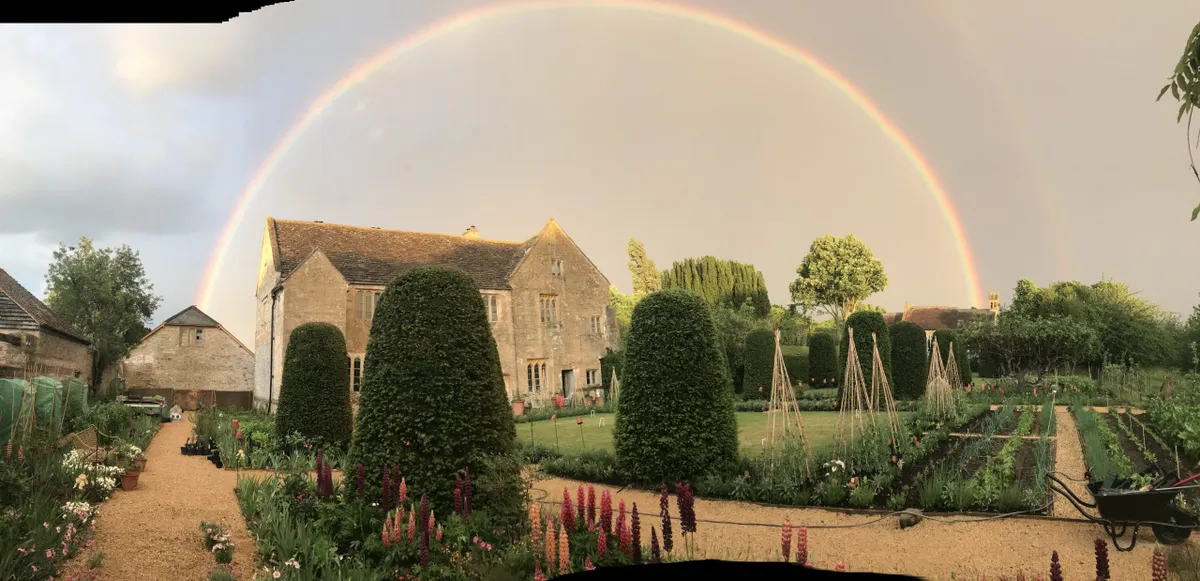Many of us turned to the sanctuary of our gardens over lockdown, potting, sowing and caring for plants to calm us. But what about those people whose lives were usually spent in gardens? Garden designers were suddenly in a position to focus a little more on their own space, rather than projects for other people. Below is a selection of top garden designers sharing how lockdown affected them and what they discovered about their own gardens.
Andy Sturgeon
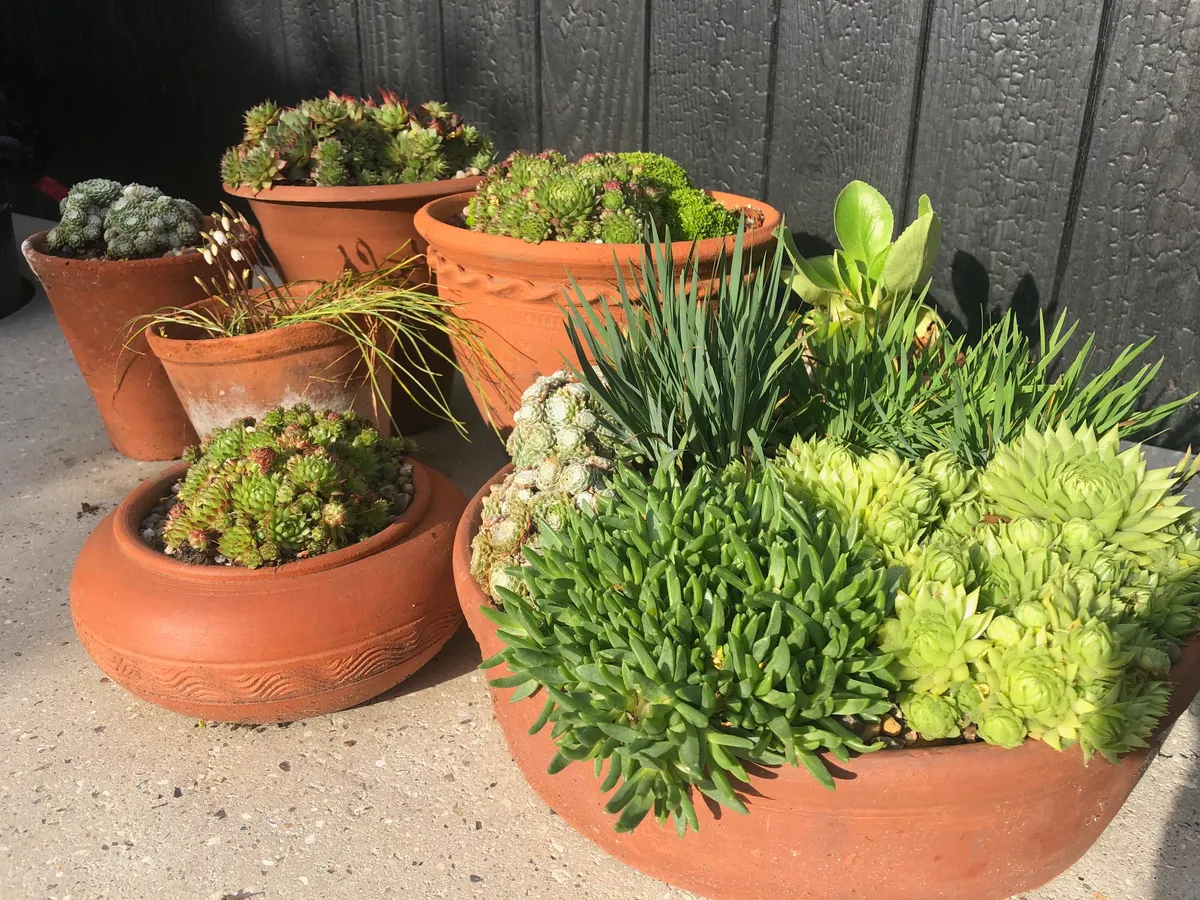
During lockdown, I have gardened in a way I never thought I would. I have always been a sporadic gardener: A huge shift in spring followed by occasional tinkering before tidying up for winter. Lockdown has been different. I am now a constant gardener. I have been out there every morning. Weeds are removed before they reach two inches tall. Slugs banished before they get to do any damage. Blackfly brushed off as they appear. My garden is tiny and it is immaculate. I’m micromanaging, but this weird form of gardening lets me make the most of my compact space. I will snip off a single leaf from one plant to make room for a neighbour. Unruly climbers get tied in weekly.
I make everyone else in the family look at things
And I’m so engaged with it. I’m always fiddling and I notice things. I see things in bud, in flower and as they fade. I poke them and peer at them and above all I appreciate them. I know precisely how the sun travels around the garden and I know exactly which birds come and go. And I make everyone else in the family look at things and see what I see and I’m making them learn the names. They didn’t care before. They like it. I think.
I crave more space and am inventing new places for plants. I’ve had a window box made to grow herbs. And a shallow trough for the table which houses part of my new alpine plant collection (see above) which was delivered to my door. I didn’t have time for these tiny plants before but they rack up the biodiversity without using up space. I’ve sown more seeds than ever. The front garden has got a meadow vibe and I planted summer bulbs in spring. I’ve already ordered spring bulbs to plant in autumn. I’ve never been this organised.
Andy Sturgeon is an internationally renowned landscape and garden designer. He is the winner of eight Gold medals at the RHS Chelsea Flower Show, including Best in Show in 2019. andysturgeon.com
Dan Pearson
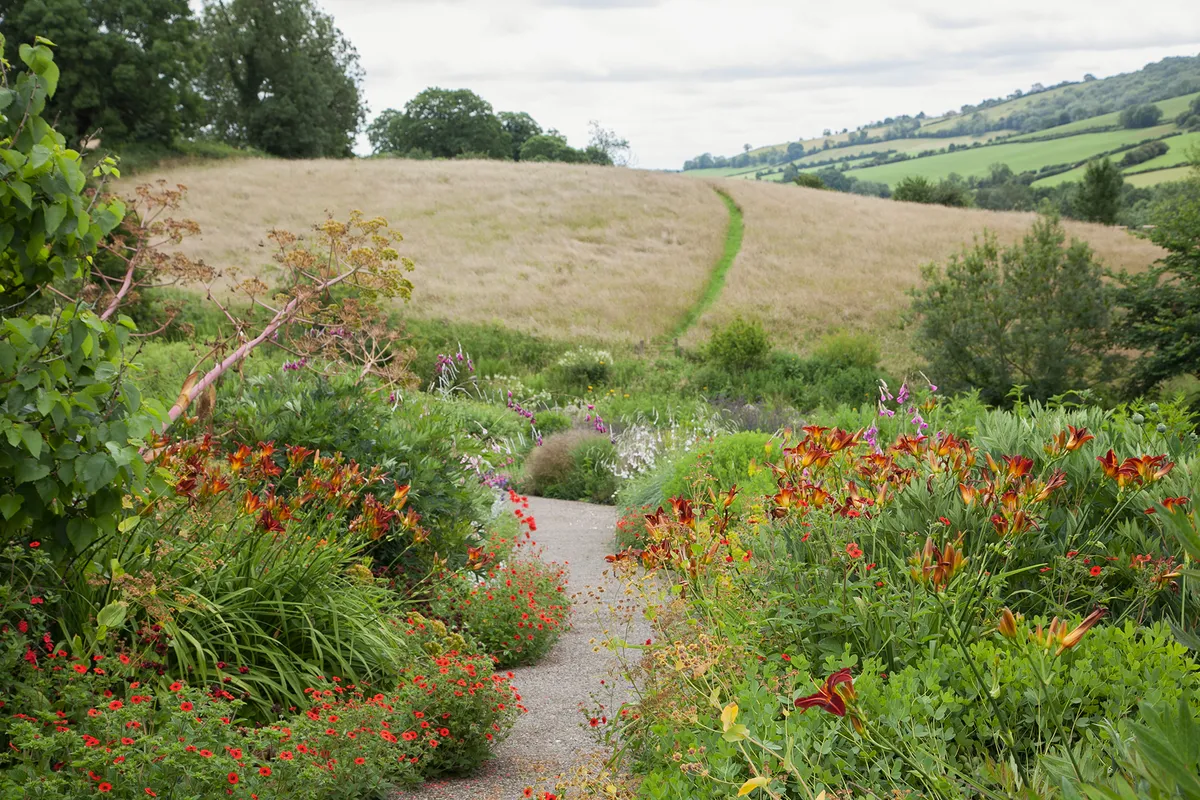
Our enforced isolation during this uncertain period has felt curiously comforting because of our time here at Hillside. It is where we want to be most but in the past it has always felt hurried and shoehorned inbetween work and its apparent rewards.
A friend, who knows us well said of our last ten years of making this place, “You’ve been planning for this”. And the last three months have proven this to be true for the garden and its connection to the environment have replenished us in this deeper connection.
It is a guide in remembering to slow and to ask what we really need from life.
Through inserting ourselves here by tending the land, we have made a place that feels altogether more meaningful. A saving grace was the timing, with the season opening out ahead of us and doing the very opposite of a world in retreat. The garden and the landscape it is intended to be part of provided an even keel and the contrast of certainty. Spring unravelled obliviously, in fact it seemed to be richer for our daily vigil and the quietened skies. Never before had we heard such birdsong nor had the opportunity to witness the day to day changes without interruption, which I started to film to capture the here and now.
We put up a polytunnel, charged with the ambition of becoming wholly self-sufficient and the kitchen garden has never looked better. Not long after lockdown I wrote about the uneasy tension of enjoying the silver lining in one of my weekly entries in Digdelve. I talked about the trepidation of looking after the garden whilst balancing a remote business and the unknown of a ‘new normal’. Hillside felt like a sanctuary and the contrasting solace of having the garden and the connection we have with nature here has been something that it has been good to share. For this is a place that has provided us both continuity and prospect. It is a guide in remembering to slow and to ask what we really need from life. It feels like it has to be less but we can already see it will certainly be more.
Dan Pearson is a British landscape designer, horticulturalist, writer and gardener. www.danpearsonstudio.com. Head to www.digdelve.com for more.
Isabel Bannerman
Moving to a new house last spring we had five months of boiling summer when we dug new sewage drains followed by five months unbroken downpour with water lapping at our new front door. This meant we were still digging French drains at the beginning of March.
Planting anything seemed an unlikely prospect and as it dawned on us we might be about to have a long spell of enforced home gardening we had to throw up some rabbit proof fencing, order dumpy bags of council waste compost and some extra strong forks and spades (made entirely of steel these cannot break but they are hefty) ready for digging over the much tracked and trampled garden.
Our muscles grew, and our waists diminished, our joints ached
Over the next twelve weeks our muscles grew, and our waists diminished, our joints ached, and we had to remember to wear hats because the sun never stopped shining. Like Mrs and Mr Noah with some of the family we set to bring on seedlings, and the frost went to three below in May. Pictorial Meadows mix was sown in the roughly rotivated edges which would still harbour perennial weeds. This is a useful way in the first year of making a garden to weed out any pernicious thistles, docks, and bindweed while at the same time enjoying an easy rainbow of annual flowers.
The rainbow was everywhere, posted in windows, painted on farmers bowsers, bannered across church yards - ‘Thank you NHS’. A rainbow of safety and a rainbow of common confusion. Gardens are rainbows, dig them for a special kind of gold, those of us lucky enough to have access to a piece of ground have been nurtured and embraced by a positive and protective life force.
Isabel Bannerman has been working with her husband Julian making gardens and buildings since 1983. She is a writer, gardener and garden designer. www.bannermandesign.com
Sarah Price
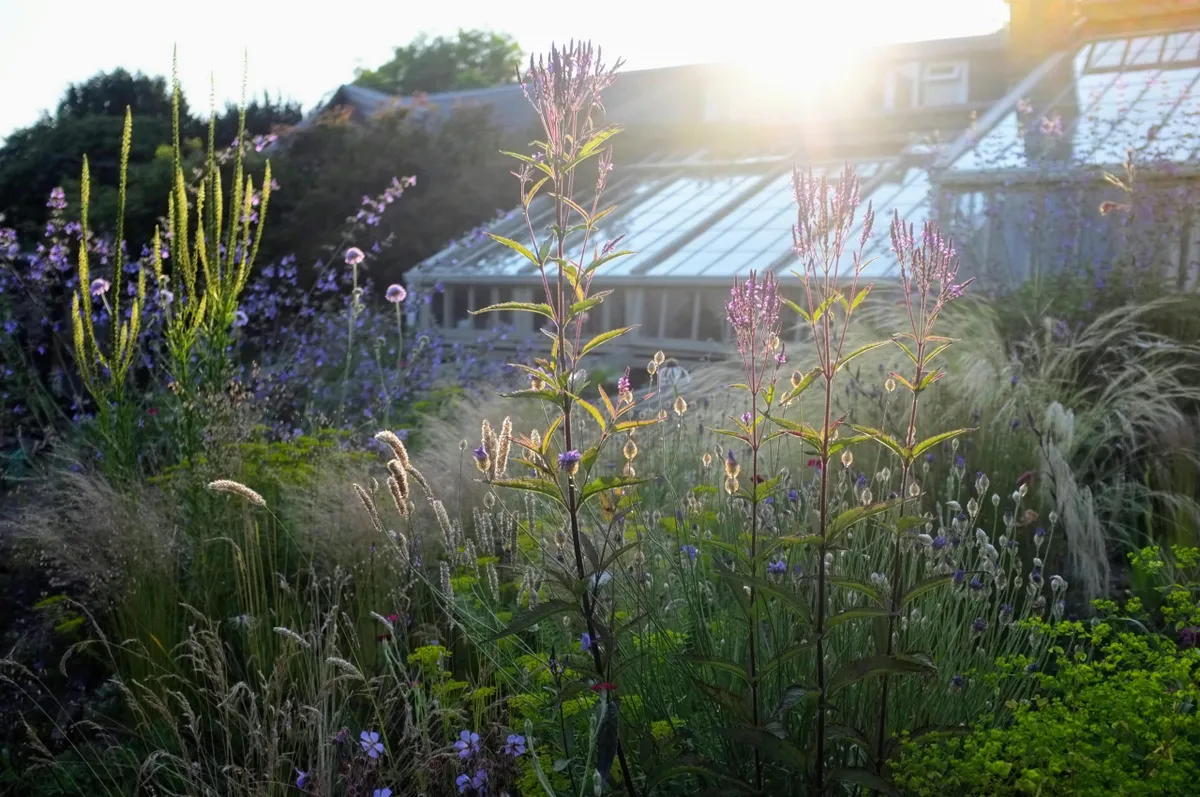
I've appreciated having more time in my garden. Last year we boldly dug out topsoil in an unproductive, weed ridden central bed of my kitchen garden and replaced it with recycled sand and gravel as a growing medium. At first it looked barren with tiny, insignificant plants but during lockdown it has gradually come to life with species tulips followed by our native pasque flowers. Now it's colourful riot of drought tolerant plants. I can clearly imagine exactly how the potato patch across the path will be similarly transformed with slender spires of pale yellow Reseda luteola (Dyer's rocket) and the stately umbels of parsnip, Briza media, fennel and the sky reaching violet-blue blooms of Salvia candelabrum. All forms that appear sensational when back lit by rising or setting sun.
It is like listening to a complex piece of instrumental music over and over again
For me the daily observations of these sand plantings is like listening to a complex piece of instrumental music over and over again. The sun loving plants have been grown hard and so as a result are shorter and more intricate, multi-layered and interlaced with undulations of tempo, repeating melodies and staccato accents. It’s felt like a meditation to walk out every morning during lockdown and to see how tiny critters inhabit, harvest and animate these short lived compositions.
But it’s not just been about plants. It’s also been about how we as a family have been using our garden. I’ve had time to observe the subtle differences of my four and six year-old's interactions. Both of them have their particular routes and interests; wild strawberry harvesting, visiting ants nests, observing ladybird larva is popular, while searching for fragments of old pottery is my youngest's obsession. We now know the individual territories and the songs of many of the birds here, even the shy Song Thrush. This feels symbolic. Our relationship with the garden has become settled and in tune. Gardening time is an everyday creative and emotional necessity and no longer a luxury.
Sarah Price is an award-winning garden designer whose work includes the planting displays at the Olympic Park. www.sarahpricelandscapes.com
